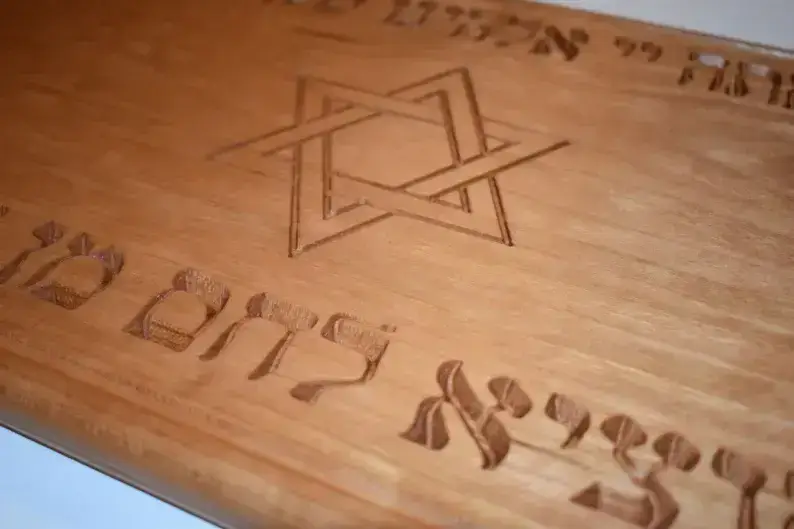Your cart is currently empty!
Carving Letters

Hand Carving vs. Router Carving
When you think of the word carving, chances are that your mind goes directly to carving pumpkins and other gourds with hand tools like knives, axes, and shovels. While there’s nothing wrong with carving pumpkins, hand carving wood might be more difficult than you think! In fact, many people who hand carve wood struggle to create the level of detail and precision required to truly make their creations stand out as high-quality.
Accurate alignment
While router engraving allows for more accurate alignment, hand carving requires you to work around existing letterforms. The trick with engraving is that it’s easier to cut away excess wood than it is to shave down raised surfaces; an inlaid letter that’s half a millimeter off center will look awful when viewed from an angle, while one that’s 1/16th of an inch off looks just fine. These inconsistencies can ruin your design or mar its overall beauty; however, they can be fixed after-the-fact with minimal effort if there’s time before your project needs to be finished or sold (this is also true of hand-carved pieces).

Accurate depth
In router carving, you can cut an accurate depth of a letter without too much worry about mistakes. Hand carving is a bit more difficult because it’s hard to see where you’re cutting if there isn’t a clearly visible Yud or Nun above it, as would be on a normal keyboard. At times when hand carving, I would accidentally connect my Yud and Nun to make an Ayin.
Better chance of correct form
Let’s face it: Accuracy is important for beautiful Hebrew calligraphy work. Hand carving is inherently less accurate than router carving; a hand-carved Yud can very easily become an Ayin if your hand slips, and that cannot happen with router-carved letters! When someone looks at your artwork, they want to see lettering done well and want to be able to read what it says without struggling too much (perhaps you’ve tried writing in a language you don’t know?
Precision cuts
Hand carving is imprecise and creates errors in spelling, but these are easy to fix. Router carving is a relatively new technique that allows for more precision and accuracy than ever before. The benefits of router engraving are great because it allows more accurate cuts on materials like stone, glass and plastic—materials that had been previously impossible to engrave at home with traditional tools. Now you can have your very own personal message cut into any material you choose! Engraved boards are also much easier to produce than custom hand-carved signs or plaques. You can even make them yourself!
Time saving
The advantage that router carving has over hand carving is its speed. It takes only a few minutes to engrave a piece of wood with a router, whereas by hand it might take hours, days or even weeks depending on how intricate you want your design to be and how many times you want to go over it with a chisel and sandpaper (although for some designs if done right you could be done in 20 minutes). There’s also no need for carving skill or experience, just plug in and carve!
A smarter apprentice
In my first attempt, I had a talented apprentice—myself—hand carve all of my boards. The board quality was great but, as I soon found out, it wasn’t nearly fast enough to keep up with demand. My second attempt was much smarter. We got a computer-driven router and almost completely replaced the apprentice’s time with equipment—and man did it pay off! Now I have more time to finish the products as well as design new ones.

You must be logged in to post a comment.